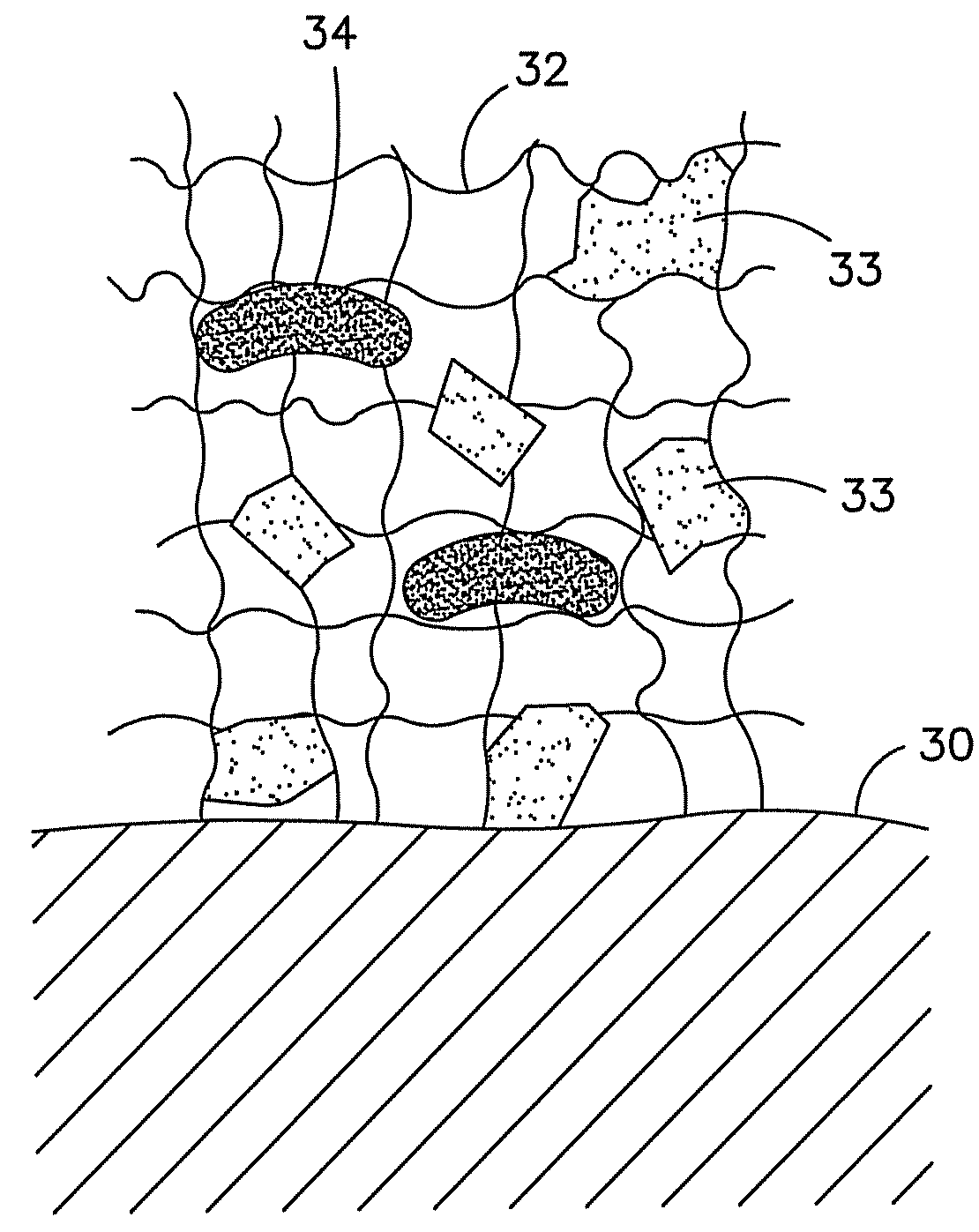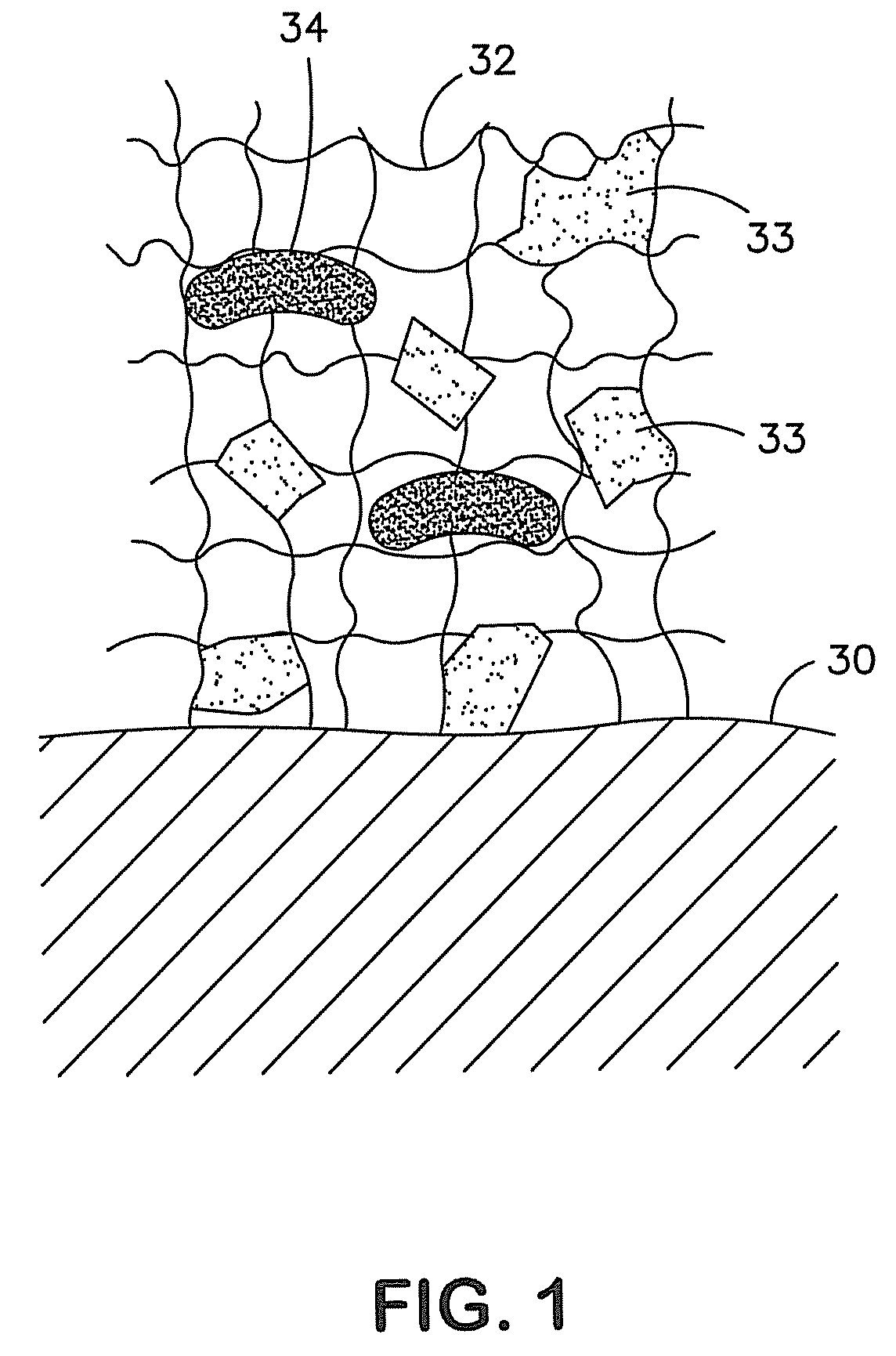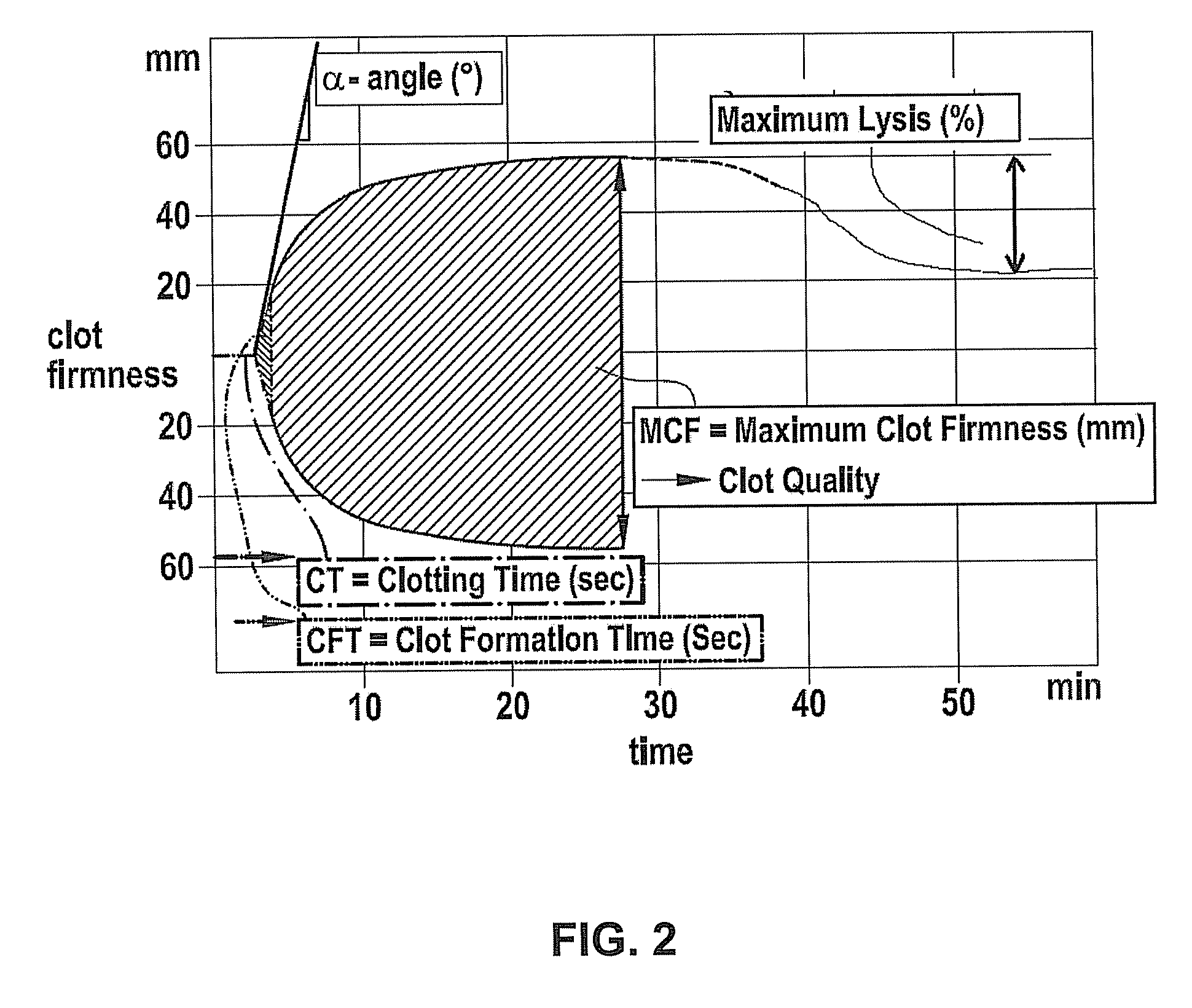Method for assessing the fibrinogen contribution in coagulation
- Summary
- Abstract
- Description
- Claims
- Application Information
AI Technical Summary
Benefits of technology
Problems solved by technology
Method used
Image
Examples
Embodiment Construction
[0040]In a first aspect, the present invention provides a diagnostic method to determine a coagulopathy in a patient, comprising the steps of:[0041]a) obtaining a blood sample from a patient;[0042]b) adding a coagulation component inhibitor (e.g. platelet inhibitor) to the sample in a suitable amount for inhibiting the coagulation component function (e.g. platelet function) or adding the blood sample into a receptacle containing this amount of coagulation component inhibitor, respectively.[0043]c) performing a viscoelastometric measurement, preferably by determining the clotting time, the clot formation time, the firmness of the clot over time, the maximum clot firmness and / or fibrinolysis from the blood sample under suitable conditions in a suitable device;[0044]d) comparing the results obtained in step c) with reference data obtained from one or more other healthy and / or pathological blood donor(s);[0045]wherein differing results are indicative for the presence of a coagulopathy b...
PUM
 Login to View More
Login to View More Abstract
Description
Claims
Application Information
 Login to View More
Login to View More - R&D
- Intellectual Property
- Life Sciences
- Materials
- Tech Scout
- Unparalleled Data Quality
- Higher Quality Content
- 60% Fewer Hallucinations
Browse by: Latest US Patents, China's latest patents, Technical Efficacy Thesaurus, Application Domain, Technology Topic, Popular Technical Reports.
© 2025 PatSnap. All rights reserved.Legal|Privacy policy|Modern Slavery Act Transparency Statement|Sitemap|About US| Contact US: help@patsnap.com



